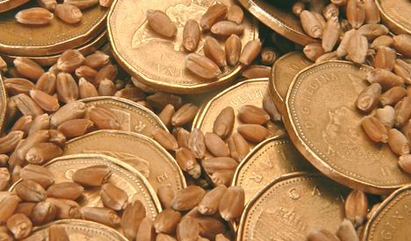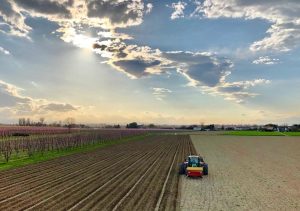Are Your Investments Paying Off? Why Proven ROI is Your Key to Success
January 23, 2020

When you make a purchase or change to your operation, you want to know it’s going to pay off. The best way to determine this is through return on investment (ROI): how much the value of the investment outweighs the cost of it.
Calculating ROI is simple: take the net profit of your investment (the value of the investment minus its cost), divide by the cost of the investment and then multiply by 100 to get ROI in percentage form.
For example, if new equipment costs $2,000 but made you $3,000, then its ROI is 50%, while one that costs $4,000 and has provided a return of $3,000 has an ROI of -25%.
The ROI will change over time with some investments providing quicker returns than others. This is an important factor to consider because of how the ROI may affect your finances in both the short- and long-term.
But since there are so many variables in farming, and some investments are harder to quantify, calculating ROI isn’t always straightforward.
ROI Calculation Challenges
With some investments, the ROI is easy to calculate and determine. Variable-rate technology is one because you can use hard numbers, such as input costs and yield, to calculate its ROI.
But some investments aren’t able to provide hard numbers. Take conservation practices like cover cropping. While there are metrics like soil organic matter and earthworm counts that can help you measure improvements, it can be challenging to turn those changes into dollar amounts to determine the ROI of the practice.
ROI can also vary year to year based on weather conditions and other factors unique to your operation. Irrigation will likely provide a much higher ROI to a dryland farmer with sandy soils than a farmer in Illinois with rich, black soil and higher precipitation amounts.
It can also vary throughout your farm. As discussed in the blog post, “Thrive in Volatile Times — Guaranteed Success in Precision Ag,” even a strong technology like variable-rate is not a universal fit for every acre due to changing commodity, seed and input values. Farms with consistent yields throughout the field won’t see the same ROI as a field with highly variable yields.
Some investments will also have indirect returns. For instance, a Trimble customer in the southeast (see Case Study #2) wasn’t trying new crops because he felt it would be too much of a hassle to monitor the weather, record field activities and communicate with his agronomist, all while trying to grow a new crop. But after a year of using cloud-based software and seeing how it made those tasks easier, he decided to try 50 acres of watermelon, which resulted in a significant increase to his bottom line.
Risks of Not Knowing Your ROI
 While trying to calculate ROI may seem like a hassle or even unnecessary at times, it’s important to do to ensure you’re not missing out on higher profits or losing money.
While trying to calculate ROI may seem like a hassle or even unnecessary at times, it’s important to do to ensure you’re not missing out on higher profits or losing money.
If you’re avoiding an investment like precision ag technology because you’re not sure it’ll provide a ROI, you may be missing out on additional profit through input savings or higher yields. But in the long run, it’ll hurt you because you won’t be as competitive as your neighbors.
This is because ROI is just a measure of efficiency — are you getting more value than you’re putting in? If your neighbor is becoming more efficient than you through precision ag or other purchases and practices, then they become more competitive and will be able to handle stronger risks.
There’s also a risk in assuming you’re seeing an ROI from an investment. This is more likely to happen if you make a lot of changes at once, because you may not be able to determine which change is providing the benefits you’re seeing. If you can’t pinpoint what is providing positive returns, then you may be overpaying for the benefits you’re receiving.
How to Evaluate Potential ROI
Given all these variables, how can you determine if a new purchase or practice is going to give you a positive ROI in the time you’d like?
First, look for local success stories and information on the investment you’re interested in. As mentioned before, ROI can vary greatly based on weather and other environmental conditions. You may not see the same return a farmer in a different region with different soil types saw. Making sure the information you have is local to you can help you get a better feel on whether that investment will pay off.
If you’re struggling to find information or you’re still not sure whether it’s the best decision for your farm, ask yourself: Do I think my farm will be better if I implement this?
Consider the risks of implementing it vs. not implementing it. A simple example is deciding to take notes on your phone instead of in a paper notebook because the risk of losing that notebook or dropping it in water and losing all that information is much higher than misplacing your phone. Even if you do lose your phone or it breaks, you could still access your notes if they were saved to the cloud.
If you’re still not sure a change or investment will be for the best but think that it could be, see if you can test it out on a small acreage on your farm, especially if there’s a higher risk associated with that change.
For example, there’s very little to no risk with guidance technology, so it makes sense to implement it across the whole farm. But if you’re wondering whether you’ll see higher corn yields in 20-inch rows vs. 30 inches, or you’re interested in a new seed trait, there’s a higher risk associated with those changes, so you’d be better off testing them out on a small acreage before implementing them across the entire operation.
Finally, find a partner you feel you can trust in helping you make the best decisions for your farm. That’s usually someone local who knows the region and can provide knowledge from that perspective.
Precision Ag Pays Off
While some practices or purchases may not pay off, precision ag is one area of farming that continues to provide a strong ROI.
According to the 2016 USDA Economic Research Service report, “Farm Profits and Adoption of Precision Agriculture,” the average farm operating profit of precision ag adopters was $66 per acre higher than non-adopters, and many adopters can attest they’ve seen positive returns.
For instance, a farm in Iowa that saw their corn yields increase from 185 bushels per acre to 240 with precision ag, while variable-rate mapping saved a Canadian canola grower 30% on fungicide costs.
Colorado farmer Troy Seaworth says that Trimble’s RTK guidance has cut the number of passes they’ve made, which has not only cut their fuel usage in half but also the number of hours they’re working. Seaworth estimates an hour in the tractor costs $60-$80.
If you’re debating whether to invest in precision ag, consider the efficiency plan of your farm. How can you make your farm more profitable or efficient? Then decide which technologies you need to achieve that and the timeline you’d like to implement them on your farm.
If you’re not sure what’s the next best technology to adopt, working with a company like Trimble can guide you in making the right decisions for your operation. When you do invest, make you want to be sure you’re not just getting the technology, but a partner that can help you work through the implementation of it.
